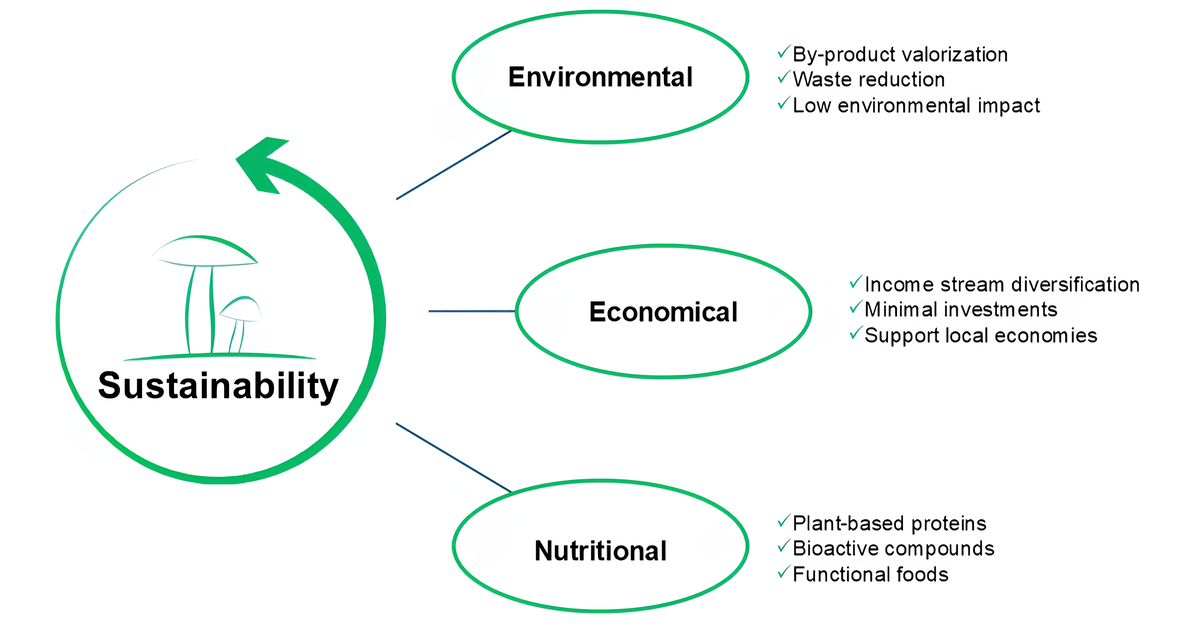The Role of Edible Mushrooms in Sustainable Food Systems
A special issue of Agriculture (ISSN 2077-0472). This special issue belongs to the section "Agricultural Product Quality and Safety".
Deadline for manuscript submissions: 31 December 2025 | Viewed by 2529

Special Issue Editors
Interests: edible mushrooms; medicinal mushrooms; bioactive compounds; beta-glucan; functional food; applied mycology; environmental botany; applied botany
Interests: edible mushrooms; medicinal mushrooms; applied mycology; environmental botany; applied botany; mushroom cultivation; bioactive compounds; nutraceuticals; sustainable food production
Special Issue Information
Dear Colleagues,
Edible mushrooms play a significant role in sustainable food systems due to their environmental, nutritional, and economic benefits. They are highly efficient at converting organic waste into valuable food, making them ideal for promoting circular economies. Mushrooms can be cultivated on agricultural by-products like straw, sawdust, and coffee grounds, reducing waste while providing a nutritious source of protein, fiber, vitamins, and minerals. Their production requires low inputs in terms of land, water, and energy, helping to reduce greenhouse gas emissions and environmental impact. From a nutritional and medicinal perspective, mushrooms are a rich source of protein, beta-glucans, antioxidants, and bioactive compounds with potential health benefits, such as boosting the immune system and reducing inflammation. Furthermore, they are low in calories and fat, making them functional foods for healthy food choices.
Economically, mushroom cultivation offers small-scale farmers an opportunity to diversify income streams and improve food security. Mushrooms can be grown in small spaces and with minimal capital investment, making them an accessible crop for both rural and urban farming communities.
Overall, edible mushrooms contribute to more sustainable and resilient food systems by promoting waste recycling, improving nutrition, and supporting local economies, all while reducing the environmental footprint of food production.
Dr. Fortunato Cirlincione
Dr. Valeria Ferraro
Guest Editors
Manuscript Submission Information
Manuscripts should be submitted online at www.mdpi.com by registering and logging in to this website. Once you are registered, click here to go to the submission form. Manuscripts can be submitted until the deadline. All submissions that pass pre-check are peer-reviewed. Accepted papers will be published continuously in the journal (as soon as accepted) and will be listed together on the special issue website. Research articles, review articles as well as short communications are invited. For planned papers, a title and short abstract (about 100 words) can be sent to the Editorial Office for announcement on this website.
Submitted manuscripts should not have been published previously, nor be under consideration for publication elsewhere (except conference proceedings papers). All manuscripts are thoroughly refereed through a single-blind peer-review process. A guide for authors and other relevant information for submission of manuscripts is available on the Instructions for Authors page. Agriculture is an international peer-reviewed open access semimonthly journal published by MDPI.
Please visit the Instructions for Authors page before submitting a manuscript. The Article Processing Charge (APC) for publication in this open access journal is 2600 CHF (Swiss Francs). Submitted papers should be well formatted and use good English. Authors may use MDPI's English editing service prior to publication or during author revisions.
Keywords
- edible mushrooms
- medicinal mushrooms
- circular economies
- waste recycling
- diversification
- healthy nutrition
- antioxidants
- bioactive compounds
- beta-glucan
- functional food
Benefits of Publishing in a Special Issue
- Ease of navigation: Grouping papers by topic helps scholars navigate broad scope journals more efficiently.
- Greater discoverability: Special Issues support the reach and impact of scientific research. Articles in Special Issues are more discoverable and cited more frequently.
- Expansion of research network: Special Issues facilitate connections among authors, fostering scientific collaborations.
- External promotion: Articles in Special Issues are often promoted through the journal's social media, increasing their visibility.
- Reprint: MDPI Books provides the opportunity to republish successful Special Issues in book format, both online and in print.
Further information on MDPI's Special Issue policies can be found here.






